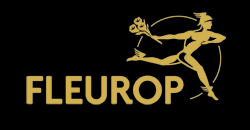THE MEANING OF FLOWERS
All about Flowers
Hardly anyone knows that the language of flowers originates from France. You see, it was there that a certain Charlotte de la Tour published a book in 1819, in which she listed the significance of various flowers. According to this, asters for example meant ulterior motives, whilst narcissi and peonies expressed shame. This book became a bestseller and then in other countries authors switched to writing their own works. Initially they stuck more or less to de la Tour’s book, but soon it became more and more imprecise and was also adapted to customary country ways. Such as in England, for example, where everything was left out that could be considered shocking. The final blow was when Americans discovered the language of flowers: Because many common English plant names had no American equivalent there, the same flower was listed under several different names. De la Tour’s "Language of Flowers" therefore still counts today as the one that is most often used. For this reason, we are pleased to pass on some of them to you:
|
Aquilegia: |
Anemone: |
Aster: |
Bellis: |
Bouquet flowers: Gallant gesture |
Erica: |
|
Fern: |
Lilac: |
Carnation: |
Gorse: |
Campanula (blue): |
Wallflower: |
|
Dog rose: |
Hops: |
Hydrangea: |
Hyacinth: |
Periwinkle: |
Iris: |
|
Jasmine: |
Crown Imperial: |
Cherry blossom: |
Cherry Laurel: |
Clematis: |
Cornflower: |
|
Lavender: |
Gillyflower: |
Gillyflower (bright red): |
Lily: |
Lotus: |
Antirrhinum: |
|
Lilies of the valley: |
Hollyhock: |
Marguerite: |
Mistletoe: |
Poppy: |
Moss rose: |
|
Myrtle: |
Narcissus: |
Carnation (red): |
Carnation: |
Carnation (white): |
Orange blossom: |
|
Daffodil: |
Peony: |
Passion flower: |
Petunia: |
Primula: |
Buttercup: |
|
Marigold: |
Delphinium: |
Rose (red, single rose): |
Rose (white): |
Rose petals: |
Rosebud (white): |
|
Rosemary: |
Snowdrops: |
Iris: |
Sunflower: |
Maiden pink: |
Pansies: |
|
Tagetes: |
Thyme: |
Tuberose: |
Tulip: |
Violet: |
Forget-me-nots: |

 French
French Spanish
Spanish
